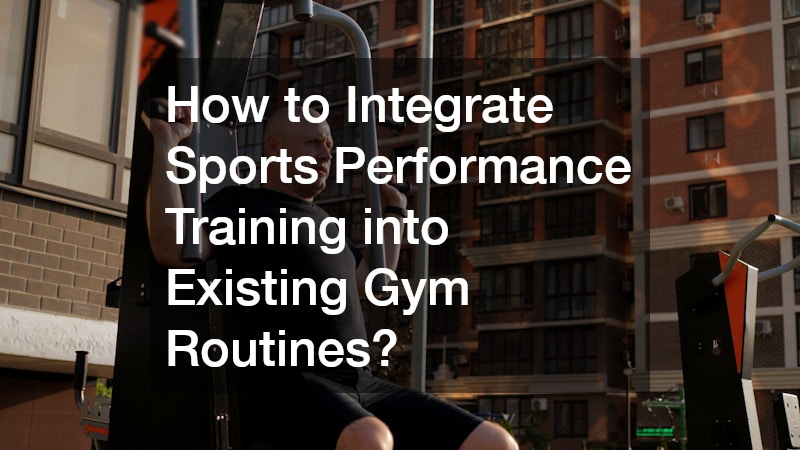In the contemporary world of fitness, sports performance training has emerged as a crucial component for achieving peak physical prowess. More than just a trend, it addresses the specific demands athletes face, bridging the gap between regular fitness routines and specialized coaching. For gyms seeking to elevate their offerings, integrating sports performance training is not just beneficial; it’s imperative.
What is Sports Performance Training?
Definition and Overview
Sports performance training is a tailored fitness regimen designed to optimize an athlete’s physical abilities relevant to their sport. It focuses on enhancing strength, speed, agility, and overall athletic performance through specialized exercises and conditioning techniques.
The primary objective is to ensure that athletes can perform at their best, reduce fatigue, and improve skills specific to their respective sports.
Unlike generalized fitness programs, sports performance training caters to the nuanced needs of different sports, ensuring athletes receive targeted conditioning. It bases its principles on scientific methods and a deep understanding of the body’s biomechanics, providing a robust framework for improving athletic output.
Much like a finely tuned engine is essential for a race car, sports performance training acts as an essential tool for an athlete’s body, maximizing efficiency and output. In essence, this training does not merely aim for improved fitness; it seeks to cultivate excellence in athletic pursuits.
Difference Between Regular Training and Sports Performance Training
While traditional training primarily focuses on general fitness goals such as weight loss or muscle building, sports performance training is engineered for athletic excellence. It includes specific drills designed to improve an athlete’s ability in their chosen sport, making it vastly different from generic workouts.
The unique advantage sports performance training offers is its goal-oriented nature, where exercises are aligned with the functional demands of sports. This tailored approach enables athletes to achieve competitive advantages like enhanced speed, agility, and power, which are not the primary focus in regular training regimes.
Ultimately, this training provides targeted improvements, such as increased lateral movement and explosive strength, which directly impact performance in sports environments. Gyms that incorporate sports performance training can therefore offer a unique advantage to clients looking to compete at higher levels.
How Does Sports Performance Training Enhance Athlete Performance?
Improving Strength, Speed, and Agility
Sports performance training employs a variety of drills and exercises specifically designed to enhance key physical attributes. These include plyometrics, resistance training, and dynamic movement exercises, which collectively boost an athlete’s strength, speed, and agility.
By focusing on these areas, athletes can achieve significant improvements in their performance, gaining a competitive edge in their respective sports. The training uses data-driven analysis and biomechanical principles to fine-tune the body’s natural abilities.
Role in Injury Prevention
One of the critical benefits of sports performance training is its focus on injury prevention, which is vital for sustaining long-term athlete health. By strengthening muscles and improving joint flexibility, athletes are less susceptible to common injuries like sprains and strains.
The training includes proprioceptive exercises that enhance the body’s balance and coordination, reducing the risk of accidental injuries during high-intensity activities. It also involves corrective exercises aimed at identifying and rectifying muscular imbalances and weaknesses.
Who Can Benefit from Sports Performance Training?
Athletes vs. General Fitness Enthusiasts
Sports performance training is undeniably beneficial for athletes aiming to reach their peak potential in sports. However, it is not exclusive to high-level competitors; general fitness enthusiasts can also derive significant advantages from its methodologies.
Engaging in this type of training can enhance everyday functional strength, agility, and speed, attributes beneficial in daily life tasks. Therefore, gyms that offer sports performance training can attract a broad demographic, appealing to those who wish to transcend typical fitness boundaries.
Case Studies
Consider the example of a collegiate soccer player who transitioned from traditional workouts to sports performance training, leading to significant improvements in sprint speed and precision. By focusing on targeted drills, they were able to optimize their on-field performance and elevate their game.
Similarly, a general fitness enthusiast reported a remarkable increase in overall athleticism and functional strength through sports performance training. This approach enabled them to engage in weekend sports activities with greater ease and enjoyment.
What Equipment is Essential for Sports Performance Training?
Gym Equipment Requirements
To effectively implement sports performance training, gyms must be equipped with specific tools that facilitate diverse and functional movements. Essential equipment includes resistance bands, agility ladders, medicine balls, and free weights, all integral for comprehensive training regimens.
Additionally, having a variety of surfaces, such as turf or matting, can simulate real sports environments, providing a realistic training ground for athletes. Ensuring access to quality equipment enhances the appeal and effectiveness of the sports performance programs offered.
Innovative Tools and Technologies
The advancement of technology has significantly expanded the capabilities of sports performance training. Cutting-edge tools like wearable fitness trackers and motion analysis software provide real-time feedback and data for personalized training adjustments.
These technologies empower athletes and trainers with insights into movement efficiency, helping to refine techniques and maximize outputs. Additionally, virtual reality systems offer innovative ways to simulate competitive scenarios, enhancing strategic and mental training components.
How to Integrate Sports Performance Training into Existing Gym Routines?
Steps for Successful Integration
To successfully integrate sports performance training, gyms should begin by assessing their current programs and identifying gaps that this specialized training can fill. Developing a step-by-step plan that outlines necessary additions to equipment, staff training, and program structuring is crucial.
Enhancing the expertise of in-house trainers by offering specialized certifications and workshops ensures they can deliver expert-level guidance. Furthermore, marketing the revamped offerings to target demographics can generate interest and grow the clientele.
Training Programs and Scheduling
Designing effective sports performance training programs involves tailoring schedules to different fitness levels while considering individual goals. Programs should accommodate both novices and advanced athletes, offering scalable challenges that match their capacities.
Incorporating varied disciplines within the training cycle ensures comprehensive conditioning, preventing workout monotony. Flexible scheduling allows clients to integrate these sessions into their routines, maximizing accessibility and participation.


